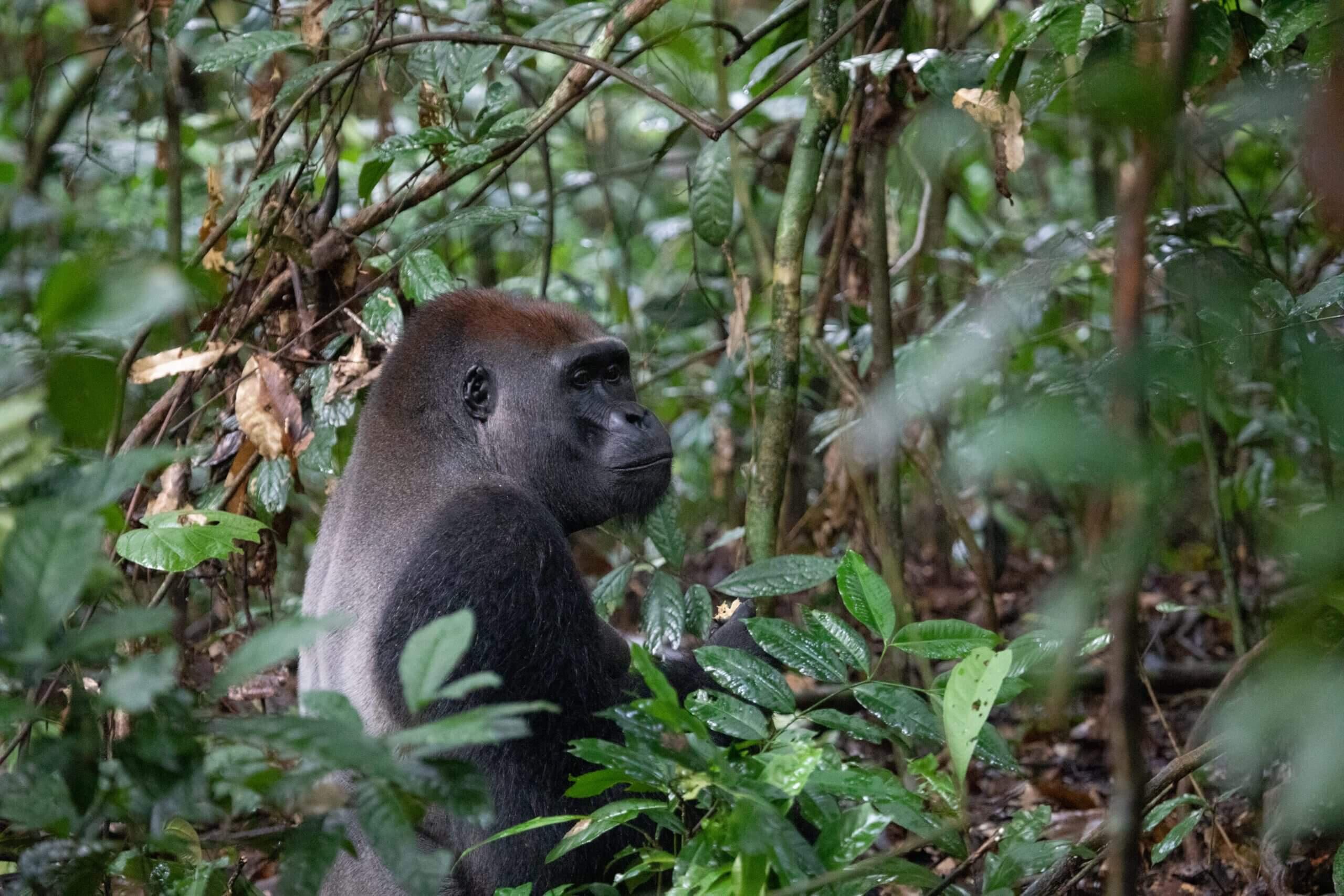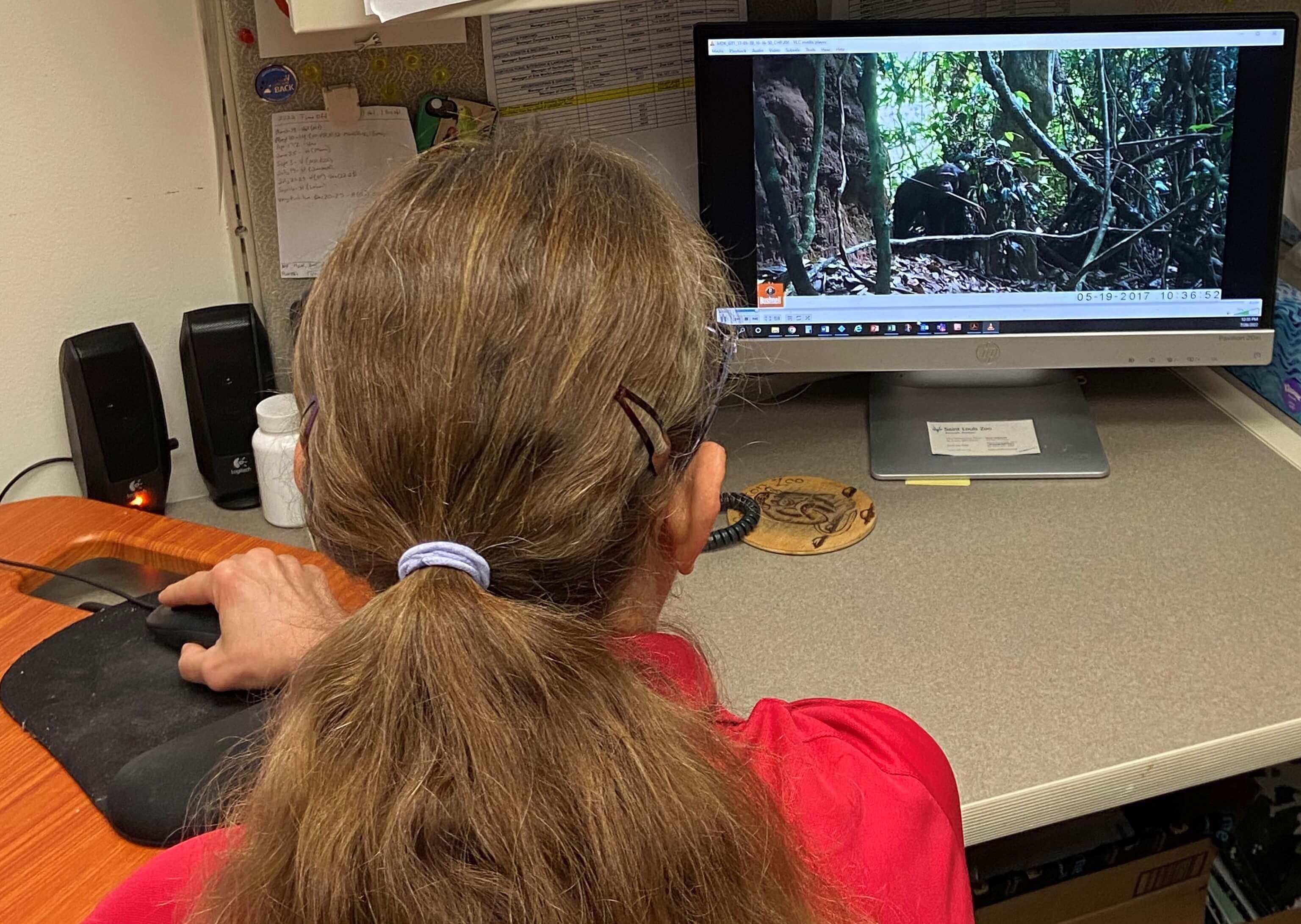The Saint Louis Zoo and international conservationists are celebrating a wildlife-saving effort as the Republic of Congo in Africa has agreed to protect the Djéké Triangle (pronounced JECK-ay) by making it part of the adjacent Nouabalé-Ndoki National Park (pronounced New-uh-BAH-lee Nnn-DOH-kee) – the only habitat in the world home to habituated groups of both gorillas and chimpanzees.
The Djéké Triangle is a 36 square-mile region home to many threatened animals, including large populations of western lowland gorillas, chimpanzees, and forest elephants, along with bongo antelopes and other large mammals, plus more than 300 bird species and 1,000 plant species.
St. Louis Connection to Congo
The Saint Louis Zoo is proud to have supported conservation of apes in this region since 2004 through research collaborations and funding to partners in the Goualougo Triangle Ape Project (GTAP), which was initiated in 1999 and is co-directed by Lincoln Park Zoo Research Fellow David Morgan, Ph.D., and Crickette Sanz, Ph.D., of Washington University in St. Louis. Both researchers reside in St. Louis.
In 2019, with the establishment of Saint Louis Zoo WildCare Institute Center for the Conservation of Congo Apes, the Zoo was able to increase its funding to the field sites in Congo. These funds were used to hire research assistants to conduct daily follows of the apes, finish construction of staff housing at the site, and purchase essential research materials. Together, GTAP and Saint Louis Zoo staff have been awarded a seed grant from the Living Earth Collaborative to conduct intensive health surveys of wild apes. GTAP and the Saint Louis Zoo also have partnered to increase educational outreach about ape conservation efforts both in St. Louis and in ape habitat countries.
Since 2014, Morgan and Sanz also have directed research at the Mondika Gorilla Project, located in the Djéké Triangle, and which houses the longest-running gorilla research site in Western Equatorial Africa. A main conservation goal over the last several years has been to document the flora, mammalian and avian biodiversity in the Djéké Triangle and use this information to elevate the protected status of the area. The WildCare Institute Center for the Conservation of Congo Apes has supported these efforts, including funding camera traps, providing photographs of animals for species identification guides, and training of some Saint Louis Zoo Primate Unit staff on indexing camera trap videos. In recent years, over 81,000 clips have been taken at 65 locations, resulting in the identification of 33 mammals and 16 bird species. These are among the first detailed assessments of species occurrences in the Djéké Triangle, and have been essential in showcasing the rich biodiversity and high conservation value of this area. Resulting information has helped achieve the goal of official protection of this important region.
“Throughout the world, including in the Djéké Triangle and surrounding areas, primates and other fauna and flora are under tremendous threats,” said Heidi Hellmuth, Curator of Primates, Saint Louis Zoo, and Director of Saint Louis Zoo WildCare Institute Center for the Conservation of Congo Apes. “The fragmentation of forests breaks up critical habitat and leaves animals and plants more vulnerable to poaching, illegal logging, and other pressures,” said Hellmuth. “We are very proud of the work of the WildCare Institute Center for the Conservation of Congo Apes and to support the work of the Goualougo Triangle Ape Project. We’re happy to have played a small part in this monumental achievement.”
The Saint Louis Zoo WildCare Institute, which was established in 2004, has helped with creating several protected areas for animals around the world, including Djéké Triangle, Arevik National Park and Zangezur Sanctuary in Armenia, Punta San Juan marine reserve in Peru, and Termit & Tin Toumma National Nature and Cultural Reserve in Niger.
About Nouabalé-Ndoki National Park
Nouabalé-Ndoki National Park was created in 1993 to protect a large area of wilderness in the Republic of Congo that was part of a forestry concession but had not yet been logged. Then, in 2013, the Goualougo Triangle was included in the Nouabalé-Ndoki National Park by presidential decree—another effort supported by the Goualougo Triangle Ape Project.
The Goualougo Triangle Ape Project and its conservation research is made possible by Lincoln Park Zoo, Wildlife Conservation Society, Saint Louis Zoo, Cincinnati Zoo and Botanical Garden, Indianapolis Zoo, the Arcus Foundation, Columbus Zoo, Zoo Atlanta, Woodland Park Zoo and other partners.
About the Saint Louis Zoo
Home to over 16,000 animals, representing nearly 500 species, the Saint Louis Zoo is recognized worldwide for its innovative approaches to animal care and management, wildlife conservation, research, and education. One of the few free zoos in the nation, the Saint Louis Zoo is the most-visited attraction in the region. Accredited by the Association of Zoos and Aquariums (AZA), the Saint Louis Zoo is part of an elite group of institutions that meet the highest standards in animal care as well as provide fun, safe and educational family experiences. The Saint Louis Zoo and the other AZA-accredited institutions collectively dedicate millions of dollars annually to support scientific research, conservation and education programs. For more information, visit stlzoo.org.



